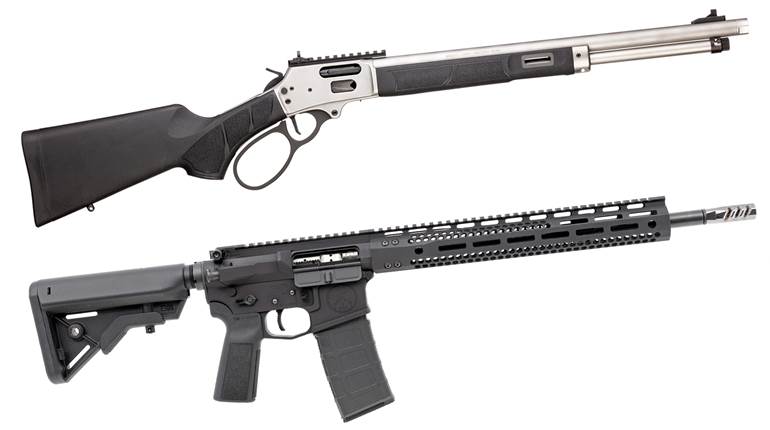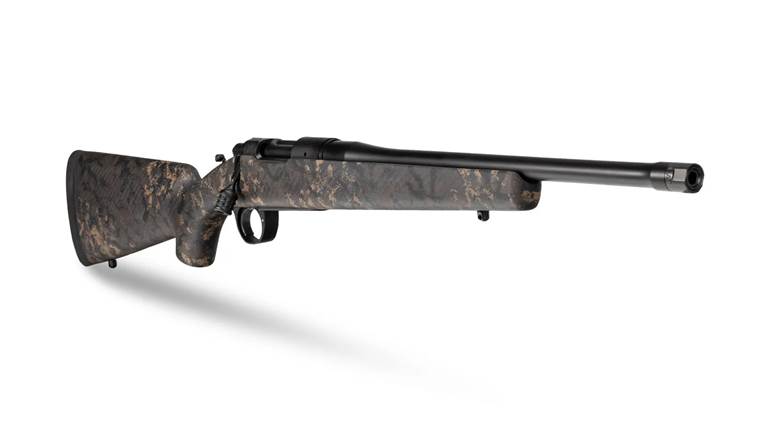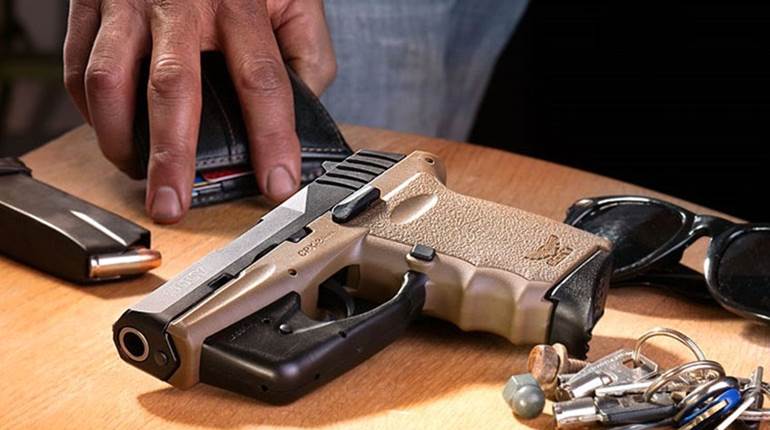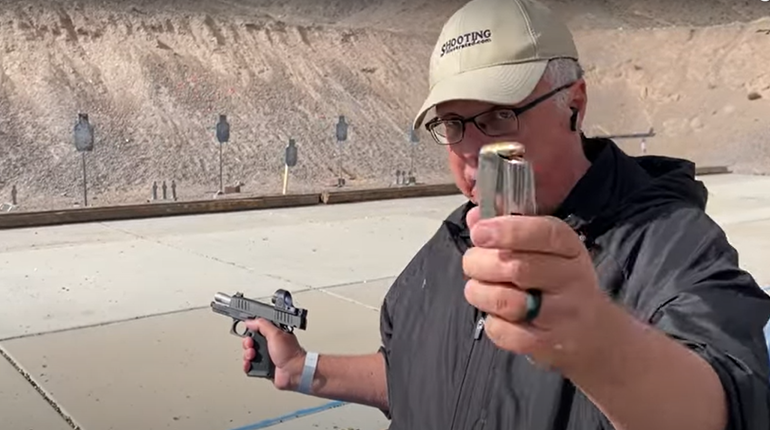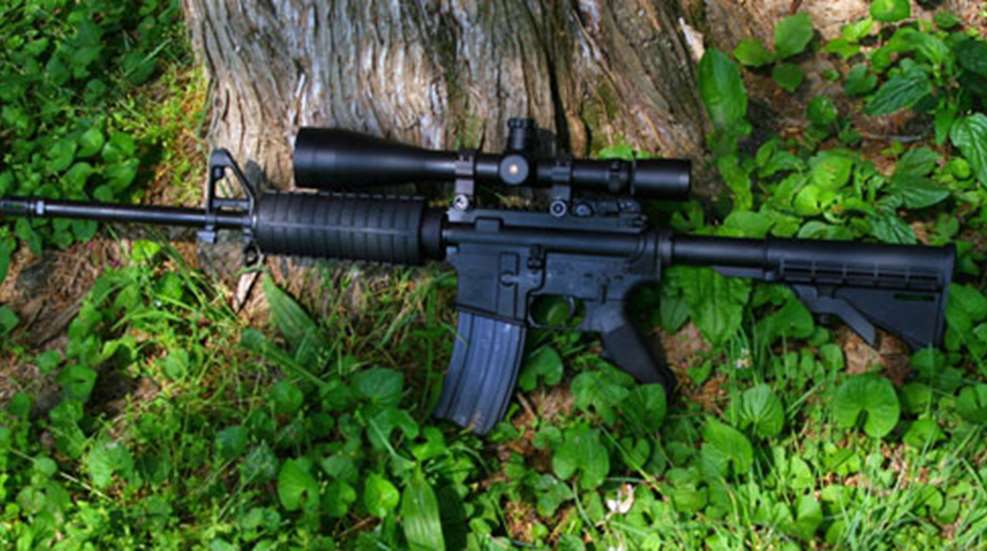
7/11/2012
The American architect Louis Sullivan is credited with coining the phrase, “form follows function,” and while Sullivan had nothing to do with firearm design, Eugene Stoner, who designed the AR, must have been a student. Nowhere has an AR been described as having graceful, flowing lines and as much as I am a firm subscriber to the “Life is too short to hunt with an ugly gun” way of thinking, the AR has earned its place as a great rifle. The AR has proven itself on the battlefield along with the Mauser, 1903 Springfield, Garand M1, Kalashnikov and M14, and is slowly but surely finding a place in the hearts and hands of hunters, alongside the ’94 Winchester, the Model 70 and the Remington 700.
On a table full of ARs, it is difficult to recognize one brand from another. There is no distinguishable trademark bolt handle or distinguished recoil lug. Most military arms fall victim to anonymity. With the makers’ mark deeply engraved on the top or side even experts have difficulty determining one from another at a distance.
So what makes a good one? Accuracy is at the top of the list, followed closely by reliability. Shooters don’t always have a sterile environment. Many shoot in the rain, forget to wipe down the rifle and use the rifle as it was designed; as a tool. They don’t want to have to baby it, tap the magazine a few times or rack the bolt several times before loading it.
The rifle was shipped from CMMG with two standard-issue, 30-round magazines—CMMG now only offers one magazine per rifle—which I loaded with a diet of 147-grain FMJ bullets provided by CMMG, the only ammunition available at the time.
I cycled several rounds through the rifle. The rounds were stripped effortlessly and chambered with little resistance, and extracted and ejected with no hang-ups or malfunctions.
The next logical progression was firing. Often times when firing a semi-auto from the bench the rifle doesn’t want to load the next round from the magazine after firing. The rifle doesn’t recoil with enough resistance against a stout shoulder to allow the rifle to operate properly. The CMMG experienced no such problem. The operation was flawless even when the rifle wasn’t planted in my shoulder as it should have been.
The trigger broke at 4 pounds, 9 ounces, and had just a perceivable amount of creep, which is not unheard of or even unacceptable as a semi-auto trigger needs this movement to set up the next shot.
The rifle fed and operated smoothly until I got to the Remington 220-grain loads. The rounds were doing a nose dive, causing the rifle not to feed properly. Switching magazines fixed the problem. After arriving home, I disassembled the magazines to find the faulty magazine was not fitted with a no-tilt follower. Neither the 147 grain nor the 125 grain showed any such malfunctions. Often times, the weight of the bullet, especially if it is much heavier and longer than the original design, will cause the follower to tilt allowing the cartridge to drop into the front of the magazine and stopping the flow of ammo. That said, standard magazines fitted with standard followers have been serving both military and civilian shooters for several decades. The best course of action is to purchase magazines equipped with no-tilt followers even if you don’t plan on shooting the bigger bullets.
After mounting a Leupold Mark IV and firing a few fouling shots, I once again climbed behind the stock, which had the standard problem of all M4 configuration stocks, not being conductive to a good stock weld from a bench. The stock is too low to be comfortable without being a contortionist of sorts, let alone see through a scope mounted on the upper receiver. The M4 configuration rifle is a battlefield implement, period. Any other use is secondary.
When mounted with a scope, the CMMG collapsible stock seemed to flex a bit when shooting, which leads me to believe the rifle and the cartridge is capable of more than my testing provided. Perhaps it was just more noticeable while peering through the scope cranked up on 20 power. At any rate, a fixed stock would be a better choice for a scope mounted rifle.
I liked, however, the Magpul MBUS sights installed on this rifle. The sights are sturdy and the rear peep sight helps center the eye quickly.
The upper and lower receivers did have some movement when mated together, which bothers some shooters, but again keep in mind the purpose for which the rifle was designed, and I still found the rifle’s accuracy more than acceptable.
The 1:8-inch RH twist barrel seemed to thrive with Remington’s light 125 OTMs (open tipped match), averaging 1.4 inches with a .8 inch smallest group. The rifle also fared decent with Remington’s 220-grain OTM grain offering, averaging 2.5-inch groups. Overall, the accuracy results rivaled many of the production bolt-action rifles available today.
Now I’m not a big fan of new cartridges, most come in like a rocket and then fizzle out quickly. I like to give a cartridge about 25 years to age before I give it serious consideration, but the .300 Blackout serves its intent, which described by Advanced Armament Corporation (AAC) is to deliver .30 caliber bullets from an AR platform without reducing magazine capacity, while still using a standard bolt. It was developed with a military purpose but so was the .30-06 Sprg.
Before I start getting hate mail, the .300 Blackout will never come close to the 30-06 in any way other than to share bullet diameters and choices. But as a hunting round the .300 Blackout has potential.
While the M16 got a bad rap early in its military career, decades later, the basic design is still the issued firearm of the US military. It has survived through the nastiest swamps and the biggest sand. The CMMG proved no different.
There are a few things I would change if I were to use it as a hunting rifle. For example, order the rifle with a Magpul stock or at the very least an A2 style stock, a 20 inch barrel and a hi-rise upper or scope mount like the Nikon M-223 mount with scope to match.
I would like try the .300 Blackout on some coyotes and maybe a big Missouri whitetail, but for now I am resigned to return the rifle. Maybe another assignment with the .300 Blackout will cross my desk.
Manufacturer: CMMG; (660) 248-2293; www.cmmginc.com
Action Type: Semi-automatic, gas-operated, direct impingement carbine
Caliber: .300 AAC Blackout (7.62 x 35 mm)
Receiver: Aluminum alloy, flat-top A3 receiver
Barrel: Phosphate, 16”, M4 profile, A2 style flash hider, carbine length handguard
Rifling: 1:8” RH twist
Magazine: 30 round detachable box
Overall length: 35 ½” stock fully extended
Weight: 8.85 lbs. (as tested) with magazine
Trigger: single-stage; 4 lbs., 9 oz.
Sights: A2 style front, Magpul rear MBUS, A3 upper receiver
Stock: CMMG collapsible stock
Accessories: one 30 round magazine, owner’s manual
Suggested Retail Price: $899.95












